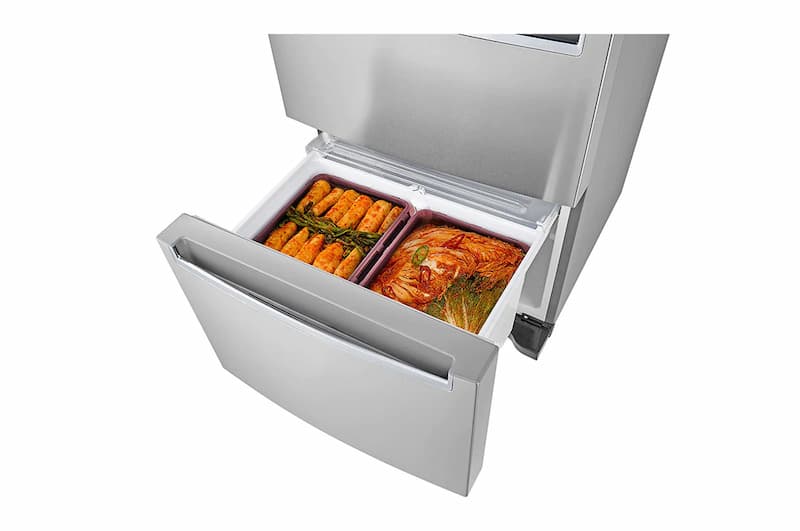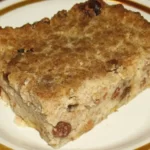
To start with, what is a Kimchi Refrigerator?
A kimchi refrigerator is a refrigerator designed specifically to meet the storage requirements of kimchi and facilitate different fermentation processes. The kimchi refrigerator aims to be colder, more stable in temperature, more humid, and with less moving air than a typical refrigerator, creating the perfect environment for kimchi fermentation. Some models might have extras like a UV sterilizer.
For more specific information, keep reading.
Table of Contents
What Is A Kimchi Refrigerator?
Despite the fact that kimchi refrigerators are made specifically for kimchi storage, you can always store other things as well. The refrigerator must enable the fermentation process required to make authentic kimchi in addition to keeping the food chilled.
Kimchi typically starts to sour within a week of being kept in a regular refrigerator. However, when kept in a kimchi refrigerator, it can remain fresh for up to 4 to 5 months before going bad. What distinguishes a kimchi refrigerator from a standard refrigerator, then?
What Distinguishes A Kimchi Refrigerator From A Regular Refrigerator?
A kimchi refrigerator needs to have a few unique features in order to support the proper fermentation rate and procedure. Kimchi was traditionally prepared and stored in onggi (Korean stoneware pots), which people would bury in the ground before the development of kimchi refrigerators. The kimchi refrigerator’s goal is to replicate the ground’s natural environment.
A kimchi fridge must: in contrast to a standard fridge:
- Remain colder. All conventional refrigerators must have their internal temperatures set at (or below) 4.44°C (or 40°F) to ensure the safety of the food they hold. In Korea, kimchi refrigerators are set to a lower temperature. This temperature represents the area around the kimchi jar during Korea’s bitterly cold winter. Standard kimchi refrigerator settings range from 28.4 to 32 degrees Fahrenheit (-2 to 0 degrees Celsius).
- Have a Higher Humidity Level: The fermentation process is influenced by humidity just like it is by temperature. As I mentioned earlier, people bury a sizable jar in the ground when making kimchi the traditional way. In the past, the autumn months have been when kimchi was traditionally made. The kimchi jars are then buried, where they remain for the duration of the winter while the kimchi ferments. The high level of humidity in the soil environment surrounding the jar is natural. The humidity levels in the kimchi refrigerator are designed to mimic this setting. Contrarily, the environment inside typical refrigerators is usually drier.
- Air Movement at Lower Levels: A fan is used to circulate cool air through the cooling systems in traditional refrigerators’ indirect cooling system. Temperature fluctuations of up to 10 degrees are produced as a result of this process. The direct cooling method used in kimchi refrigerators, on the other hand, doesn’t involve much air movement. As a result, neither the interior humidity levels nor temperatures vary.

Kimchi Refrigerator Brands
The three most well-known kimchi refrigerator manufacturers, in my opinion, are:
LG
This company manufactures a wide range of electronic devices, including TVs, smartphones, washing machines, and more. Frequently, consumers give these products excellent ratings in all categories.
Samsung
Samsung is a sizable electronics and appliance company like LG. They concentrate on a wide range of products, including televisions, smartphones, refrigerators, rice cookers, and more.
Dimchae
Dimchae has a more constrained focus compared to LG and Samsung. They mainly produce kimchi refrigerators and rice cookers.
Editor’s Pick: Sriracha is one of the most consumed hot sauces worldwide. But, does sriracha need to be refrigerated?
How Will I Know If My Kimchi Is Bad?
In reality and from a scientific standpoint, fermentation and decay are similar. Therefore, even if a food is “fermented,” it may still be referred to in other cultures as “decayed.” In other words, it’s difficult to determine whether kimchi went bad or not.
Better to just put the kimchi out if it smells moldy. You might comprehend what I’m saying if you’re used to eating kimchi. Simply dispose of the kimchi if it lacks the distinctive aroma that you would expect to find there.
Throw the kimchi out if it has mold on it. Additionally, I frequently threw out moldy kimchi. However, if you just take out the moldy kimchi, the rest is still good to eat. Identify the moldy portions of the kimchi and separate them from the rest.
Kimchi Is It Keto-friendly?
It’s a question that is both very simple and complex.
If anyone is asked to describe the flavor of the food they frequently eat in the nation, it could be a very challenging question. Although people in some nations claim it is delicious, there are many foods that people in other nations find repulsive.
A dish that does that is kimchi. It would be preferable to discuss the reasons behind Koreans’ consumption of kimchi as opposed to its flavor.
We are unable to eat vegetables in the winter because Korea has four distinct seasons. Therefore, the nutrients that we can obtain from vegetables are restricted.
During the winter, kimchi is a food that offers these nutrients. After eating meat, greasy food, etc., people in the West tend to think of coffee.
Korea’s national dish, kimchi, can take the place of coffee. You can eat greasy food without experiencing any discomfort if you pair it with kimchi.
Kimchi in particular contains lactobacillus, which strengthens Korean intestines. Koreans eat kimchi as a result….
Whether or not this kimchi tastes good depends on who made it. Consuming unappealing kimchi requires a lot of effort from Koreans.
Our top choice: Liebherr Refrigerator Reviews By Customers

FAQs
How To Store Kimchi?
A common side dish in Korea, kimchi is made from spicily fermented cabbage and other vegetables.
Traditionally, the kimchi was created in enormous earthenware vats buried in dirt, but today it is usually manufactured in mason jars and fermented at room temperature or slightly under it.
The method used to make kimchi is very similar to that of sauerkraut, as are the recommendations for storage.
Most of the time, unpasteurized kimchi is sold. That typically indicates that the fermentation process is still going on and the jar’s helpful bacteria are still keeping busy.
Because of this, the refrigerator is the best place to store items because fermentation there is significantly slowed down. The jar can stay at room temperature for a few more days, but the kimchi that results will be very sour, and opening the jar might cause it to burst like champagne.
As soon as you open the jar, keep in mind to keep it tightly closed when not in use. Secondly, like using pickles, be certain all of the vegetables are coated in liquid not to dry out and Kimchi go bad.
Any other airtight container must also function if you are unable to use the first jar for any reason. Ensure that you move all of the liquid and the vegetables are submerged inside.
If you have opened a jar of unpasteurized kimchi and did not discover it sour enough to your liking, then you can fix that easily. Just allow the sealed jar to immediately sit at the sink and place it back in the refrigerator in the afternoon. That day, you should taste the contents of this jar more deliciously.
In case you were curious, we then set the container at the sink in the event that the germs immediately go crazy and it releases a few liquids.
You can keep an unopened jar of kimchi that has been pasteurized or heated in your kitchen or pantry. Just make sure it stays in a cool location away from heat sources like the sun.
Kimchi’s germs are all eliminated by heat therapy. There is no need to keep it chilled as a result. But as soon as you open the jar, then be sure to keep it tightly sealed from the refrigerator.
Not to mention, whenever you take the vegetables out of the jar, always use clean utensils. While the environment indoors is very acidic and will likely kill many germs that may get in there, there is no point in testing if that works.
How Long Does Kimchi Go Bad In The Refrigerator?
Experienced kimchi is typically placed in an airtight, sterile container and covered with brine before it begins to ferment. Some may contain a trace amount of apple cider vinegar or rice vinegar.
To stop the unwelcome growth of E, sterilization must be done properly. coli, Salmonella, and other germs that may lead to food poisoning.
At room temperature, it ferments for 3–4 cycles, or for 2–3 months in the fridge. Lactic acid bacteria are produced during this process, along with other beneficial bacteria.
Kept at room temperature, kimchi lasts one week after launching.
The fridge remains fresh much more – roughly 3-6 months – and continues to ferment, which might result in some sour taste. Wash your kimchi at or below 39°F (4°C), as higher temperatures hasten spoiled food.
The kimchi can be discarded after three months if you prefer a milder flavor or a crunchier texture. After this point, its flavor might drastically alter and it might turn mushy.
However, kimchi may still be safe to eat for up to three months if there is no mold, which indicates spoilage. If you don’t need to throw it away but don’t like how sour it is, think about adding it to fried curry or rice to soften the flavor.
The Bottom Line
A third of all food produced for human consumption, or about 1.3 billion tonnes, is wasted annually, according to the United Nations. There is more than 800 million mouths worldwide that could be fed with the amount of food that is wasted!
It is a sad fact that so much food is wasted rather than consumed because of the difficulties in moving food from one place to another. However, every person can help to lessen the amount of food waste. In actuality, there is technology that can assist you in contributing to the solution rather than the problem.
I will be happy to assist you if you LEAVE A COMMENT in the blog comment section below if you have any questions.






